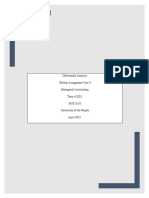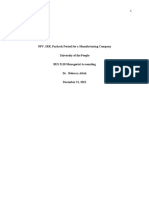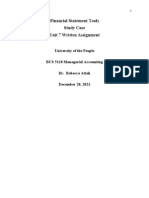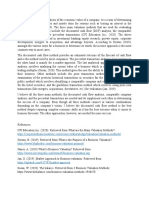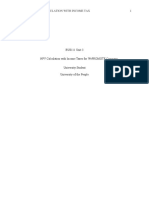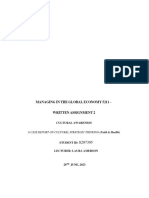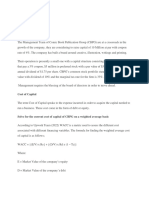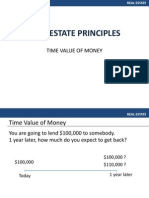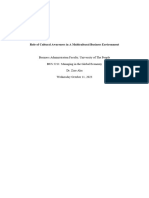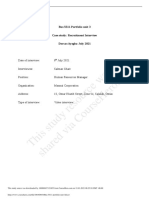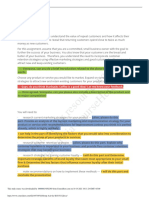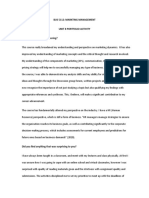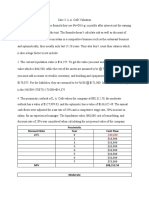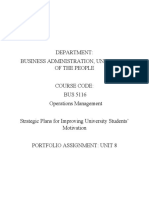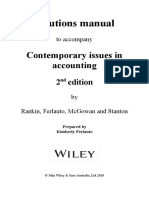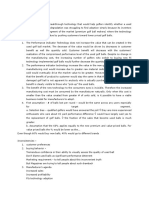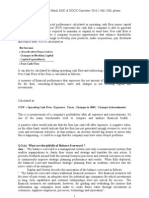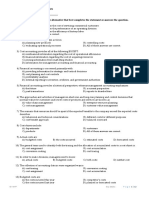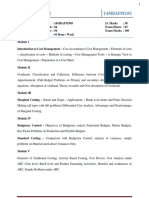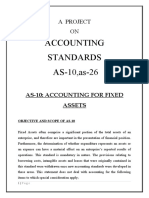0% found this document useful (0 votes)
325 views5 pagesWritten Assignment Unit V
Papaya Partners, a papaya distributor, saw actual costs exceed their budget last month and asked an analyst to calculate cost variances. The analyst calculated variances for direct materials price and usage, direct labor rates and efficiency. Based on the analysis, the analyst found direct materials had a favorable usage variance but labor had unfavorable rate and efficiency variances, and recommended actions to improve performance.
Uploaded by
कुनाल सिंहCopyright
© © All Rights Reserved
We take content rights seriously. If you suspect this is your content, claim it here.
Available Formats
Download as DOCX, PDF, TXT or read online on Scribd
0% found this document useful (0 votes)
325 views5 pagesWritten Assignment Unit V
Papaya Partners, a papaya distributor, saw actual costs exceed their budget last month and asked an analyst to calculate cost variances. The analyst calculated variances for direct materials price and usage, direct labor rates and efficiency. Based on the analysis, the analyst found direct materials had a favorable usage variance but labor had unfavorable rate and efficiency variances, and recommended actions to improve performance.
Uploaded by
कुनाल सिंहCopyright
© © All Rights Reserved
We take content rights seriously. If you suspect this is your content, claim it here.
Available Formats
Download as DOCX, PDF, TXT or read online on Scribd
/ 5





